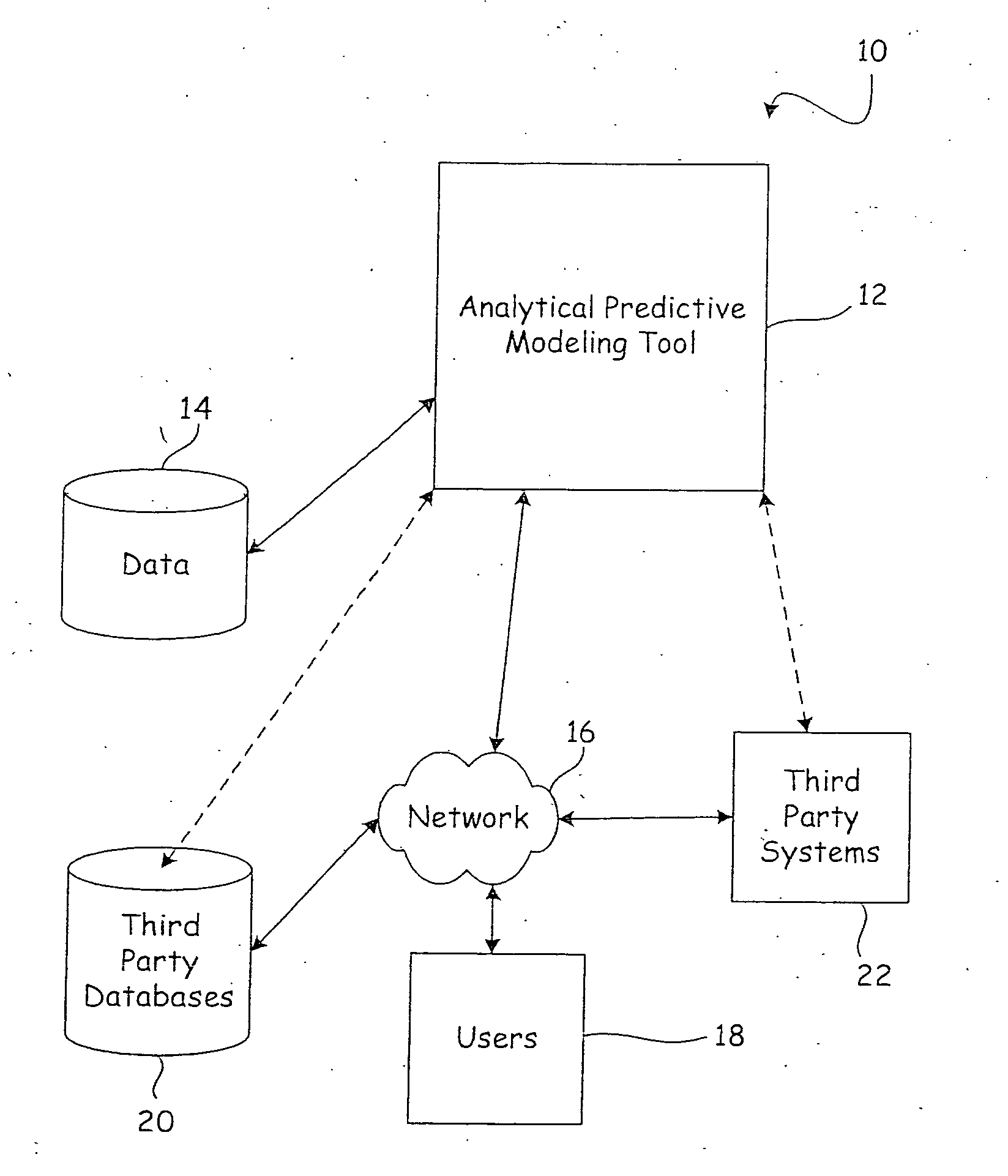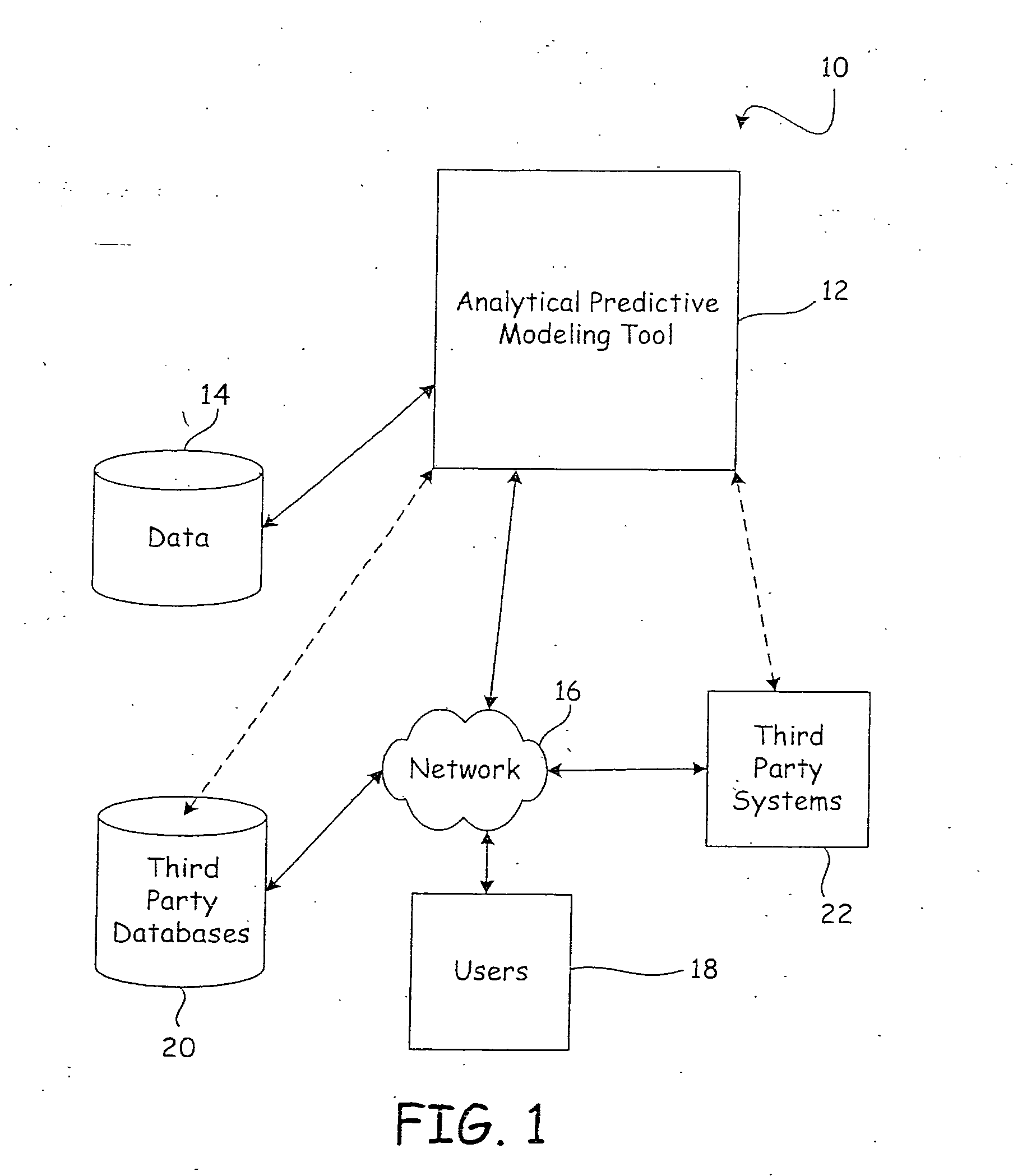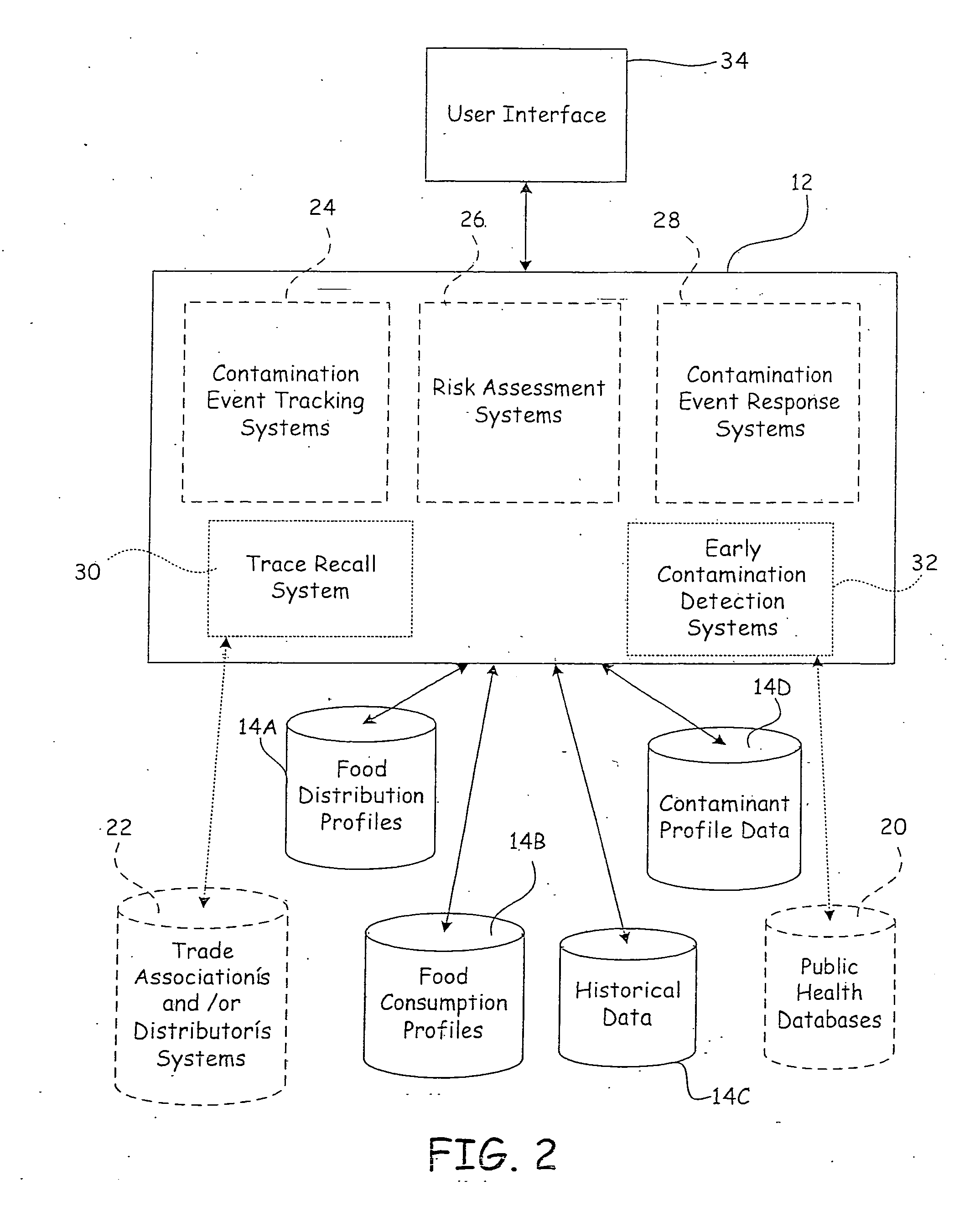System and method for identifying a food event, tracking the food product, and assessing risks and costs associated with intervention
a technology for food events and risk assessment, applied in the field of food item bacterial and microbial contamination, can solve the problems of reducing the effect of food quality, affecting the quality of food, and affecting the quality of food, and achieve the effect of quick and accurate determination
- Summary
- Abstract
- Description
- Claims
- Application Information
AI Technical Summary
Benefits of technology
Problems solved by technology
Method used
Image
Examples
Embodiment Construction
[0030] Fresh food products have a very short usable life-cycle from packaging to spoilage. Typically, fresh foods become unusable in a matter of days or weeks. By contrast, pharmaceuticals, canned goods and other consumables typically enjoy a much longer shelf life, and the time from packaging to consumption of those goods may be many months.
[0031] Because of this short “life-cycle”, fresh foods are packaged, sold, and consumed more rapidly than most other products. The rapidity of the consumption of fresh foods makes it difficult to identify, trace and recall food products before people are affected. Specifically, it takes several days for infected consumers to seek medical attention for contaminated food-related health problems. During that time, contaminated food has been purchased and consumed by many other individuals. By the time the contaminant is identified and the contaminated food is traced to the source, it is often times too late to effectively recall a product, in part...
PUM
| Property | Measurement | Unit |
|---|---|---|
| temperatures | aaaaa | aaaaa |
| temperatures | aaaaa | aaaaa |
| time | aaaaa | aaaaa |
Abstract
Description
Claims
Application Information
 Login to View More
Login to View More - R&D
- Intellectual Property
- Life Sciences
- Materials
- Tech Scout
- Unparalleled Data Quality
- Higher Quality Content
- 60% Fewer Hallucinations
Browse by: Latest US Patents, China's latest patents, Technical Efficacy Thesaurus, Application Domain, Technology Topic, Popular Technical Reports.
© 2025 PatSnap. All rights reserved.Legal|Privacy policy|Modern Slavery Act Transparency Statement|Sitemap|About US| Contact US: help@patsnap.com



